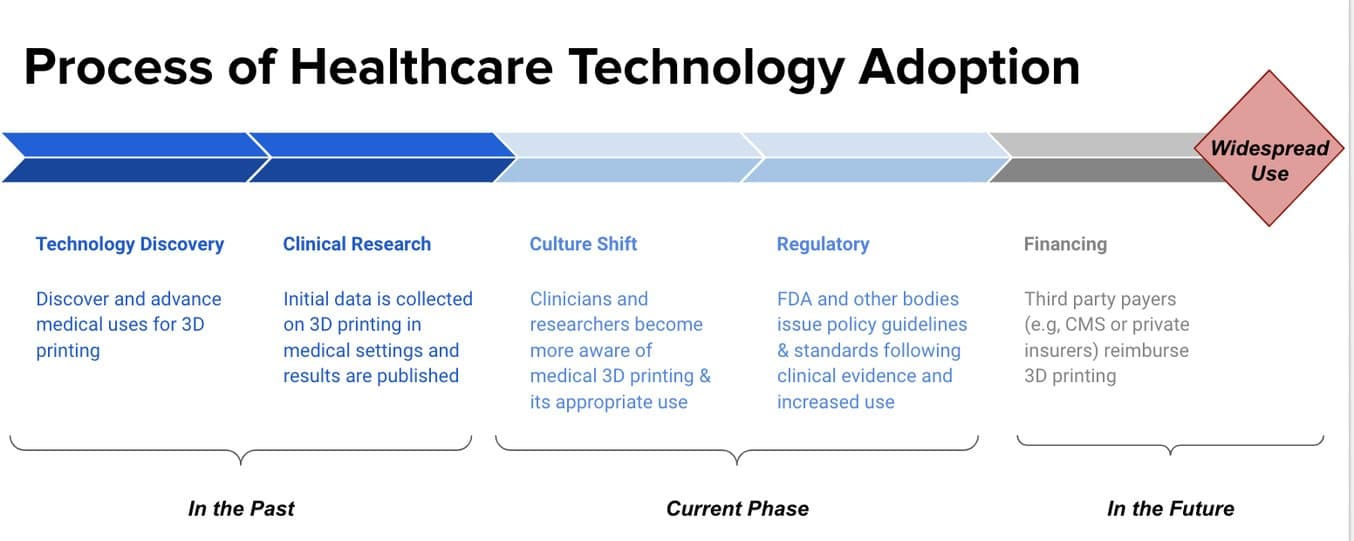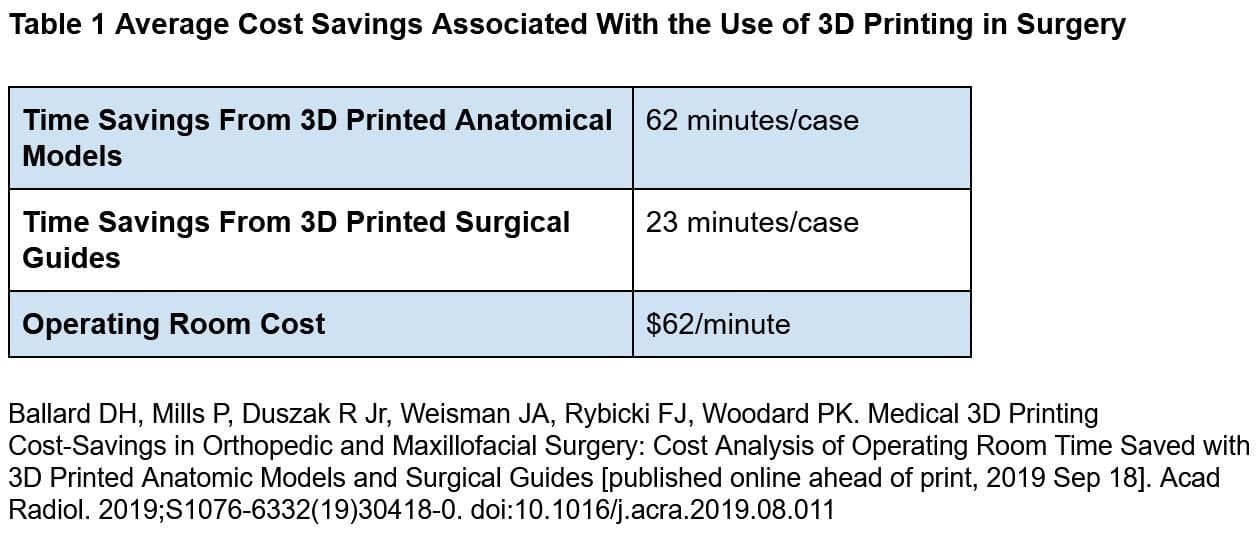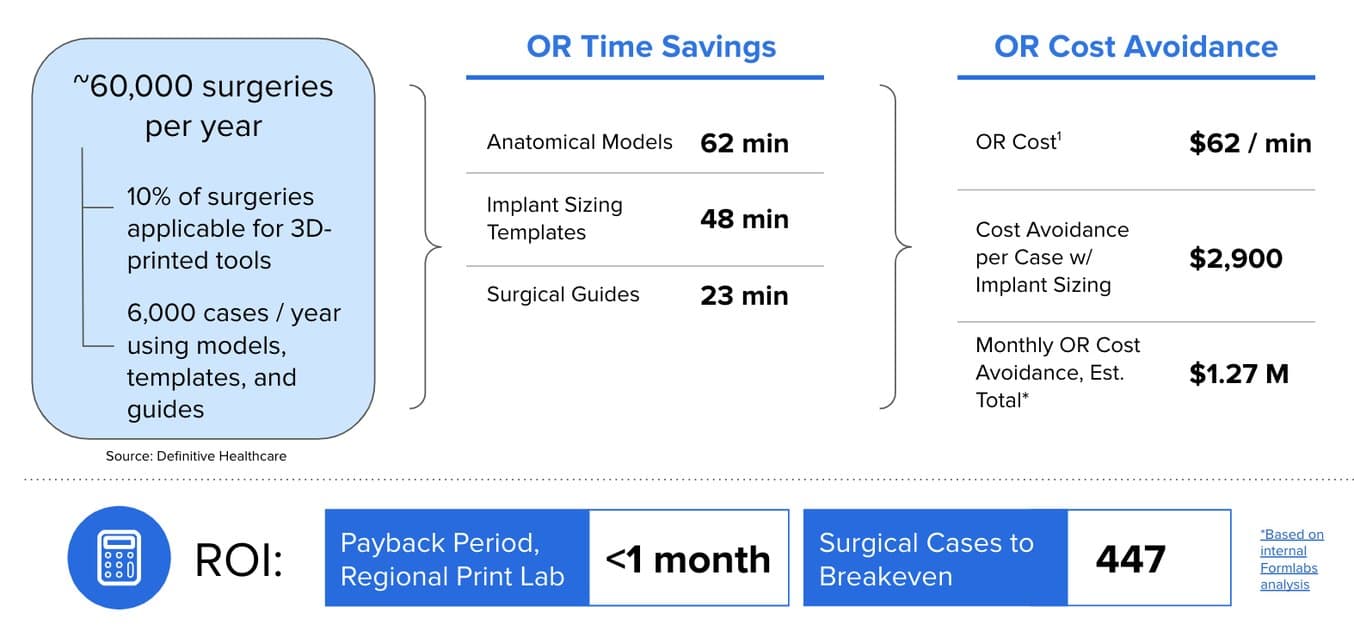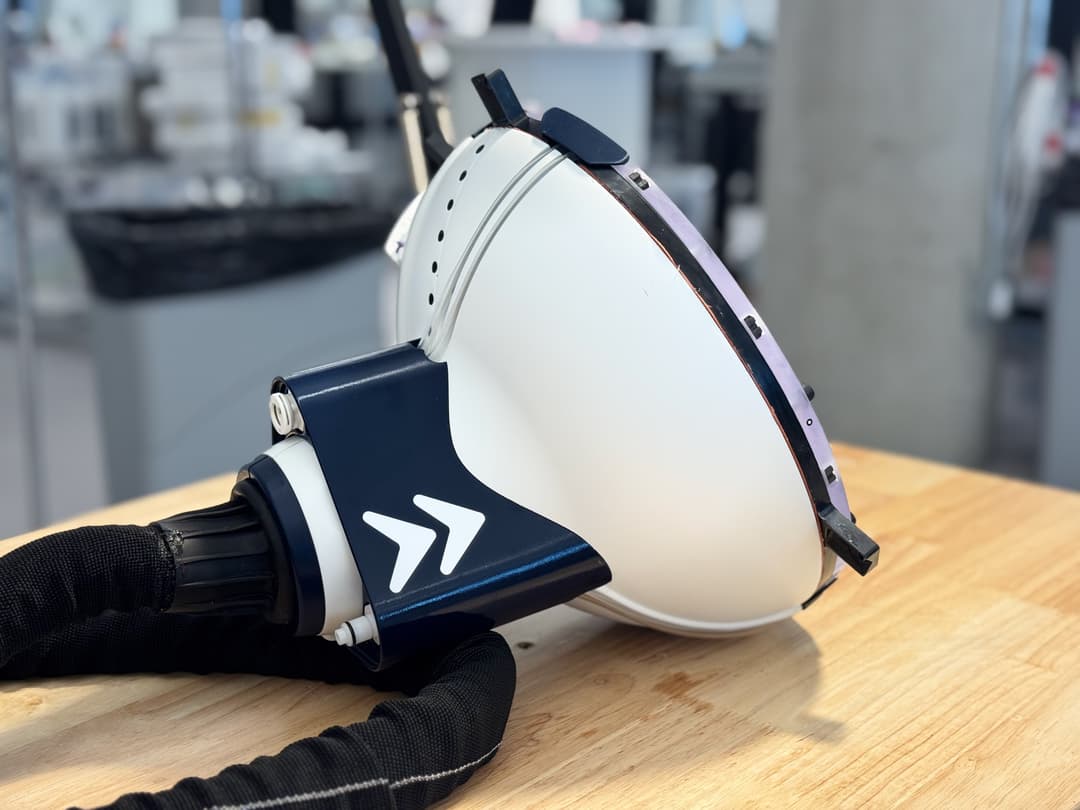It’s no secret that healthcare financing can resemble a complex maze involving a range of stakeholders, such as providers, third-party payers, patients, and product manufacturers. When it comes to funding Formlabs medical 3D printing, we know that healthcare systems use a variety of strategies.
The Formlabs medical team recently spoke with some of our current hospital customers and asked them, “how does your healthcare system think about financing medical 3D printing?” Unsurprisingly, we received more than one answer to this question. In this blog post, we’ll discuss the four most common strategies that healthcare systems identified.
These include:
-
Third-Party Reimbursement
-
Tracking Surgical Outcomes & Cost Avoidance
-
Internal Department Billing
-
Research & Grant Funding
Third-Party Reimbursement
When we talk about third-party reimbursement, we’re referring to healthcare payers, such as Medicare, Medicaid, or private health insurers, reimbursing healthcare delivery providers (e.g., hospitals, physicians, or clinics) for the item or service that a patient received. Standards and policies surrounding reimbursement are constantly evolving, driven by regulatory guidance, volume / usage, and clinical / economic evidence.
Before we discuss the third-party reimbursement landscape further, we should note that as of 2020 third-party reimbursement for medical 3D printing is limited. However, the reimbursement environment around 3D printing is changing rapidly, with several exciting developments taking place in the past year. Four new American Medical Association (AMA) Current Procedural Terminology (CPT®) III codes related to 3D printing took effect in July, 2019.
Physicians and other healthcare providers use CPT® codes to track the use of medical services, and payers often use them for claims processing. There are three levels of CPT® codes (I, II, and III). Category III codes are temporary codes that allow data collection for emerging technologies, services, procedures, and service paradigms. Although CPT® III codes are not frequently reimbursed by third-party payers, these investigative codes track usage and cost, which will be critical data points for demonstrating the value of 3D printing services moving forward.
Following the introduction of the CPT codes, the Radiological Society of North American (RSNA) and the American College of Radiology (ACR) announced a new registry for data collection and tracking. The registry is co-sponsored by RSNA, ACR, and industry partners, including Formlabs. The fact is, reimbursement follows clinical evidence. Therefore, collecting clinical evidence is paramount to achieving Category I codes over time.
Although most institutions are not yet billing for medical 3D printing, one institution we spoke with has begun billing insurers for 3D printed anatomical models and surgical guides. When an institution begins billing for a service, there are several nuances to consider. First, hospitals typically contract with more than one insurer. Even if one private insurer begins covering a service, another might not. Additionally, if claims are denied by insurers, patients are likely to receive a bill for that service.
For medical technologies like 3D printing, broad third-party reimbursement often follows a lengthy process, which is highlighted in the graphic below. After a technology is introduced, innovative adopters begin to conduct and publish clinical research. As wider adoption and cultural acceptance grows, regulators such as Food and Drug Administration and others solicit input and offer guidance.

Based on industry analysis done by Formlabs.
The good news is that the use of medical 3D printing and the clinical evidence behind it are actively growing. We anticipate that with continued growth and positive clinical results, broader third-party reimbursement is likely in the near future.
Tracking Surgical Outcomes & Cost Avoidance
Many products are used in hospital settings without third-party reimbursement or an associated medical code. Hospitals prioritize purchasing technologies and services that improve clinical outcomes, reduce costs, enhance reputation, or receive strong physician endorsement. Because third-party reimbursement remains nascent today, institutions are more likely to track a combination of these metrics to make the funding case for medical 3D printing.
In particular, tracking surgical outcomes and cost avoidance can be a strategy for securing initial funding, as well as sustaining institutional support year-over-year. In the peer-reviewed literature, researchers have shown that the use of 3D printed anatomical models and surgical guides significantly reduce operating time, resulting in the average cost savings highlighted in the table below.

Compared to other manufacturers, Formlabs offers a low-cost, high-quality solution, making clinical and cost savings analyses even more compelling. To highlight the cost avoidance associated with Formlabs 3D printing, our team built an ROI calculator that enables health systems to analyze the payback period associated with a Formlabs printer purchase based on surgical cost avoidance. Below, we have illustrated the use of the calculator for a large, regional health system that conducts 60,000 surgeries a year across all of its locations.
If you are interested in learning more about the calculator or applying it to your institution, please contact us here.

Internal Billing
Unlike some technologies, which serve only one hospital need, 3D printers can be utilized by multiple departments for a range of different purposes. For example, a radiology department might purchase a Formlabs printer and collaborate with several surgical departments to print anatomical models for pre-surgical planning. Medical education directors might use the printers to create anatomical models for medical student anatomy training or surgical simulation, while supply chain directors use them to stem shortages of PPE, such as those many health systems experienced during COVID-19. If the health system is diversified, it might have associated dental clinics that would benefit from printer use.
Each of these departments typically has its own budget, yet one department is likely to be the primary purchaser of the Formlabs printer and materials. One solution identified to remedy this challenge is billing internally for 3D printer usage. The department that owns the printer and incurs the bulk of printer expenses tracks usage internally, and requires that other departments pay for their use of the printer. This allows institutions to spread the costs of the printer internally, and also supports multiple departments using the printer for different purposes.
Research and Grant Funding
Medical research is often financially supported by both government and private grants, which seek to advance scientific innovation and medical breakthroughs. 3D printing can support medical device prototyping, tissue engineering, surgical applications, and a range of other research and development objectives. Therefore, grant funding remains a common source of funding for medical 3D printing, particularly in academic medical centers or other leading research institutions.
Though the National Institute of Health (NIH) is the leading government funder of biomedical research (with approximately $32B in grant funding yearly), there are dozens of other government agencies that fund scientific research. Private grant funding is also supplied by nonprofit agencies, clinical associations, and private corporations. Institutions should conduct background research into the public and private entities that are most likely to fund their area of research.
Picking the Right Solution
Hospitals and healthcare systems that are interested in funding a medical 3D printing program should first engage internal stakeholders, such as radiologists, surgeons, and administrators to design a funding strategy that aligns with its needs. For an academic medical center that is primarily using the Formlabs printer for research and development projects, a grant-based funding strategy may be best. For an institution that plans to use the printers across multiple departments for a variety of purposes, using an internal billing system might be more appealing. Institutions with more advanced 3D print programs may be prepared to begin third-party billing for medical 3D printing.
Have a question about funding a medical 3D printing program? Visit us at formlabs.com/medical or contact us.


